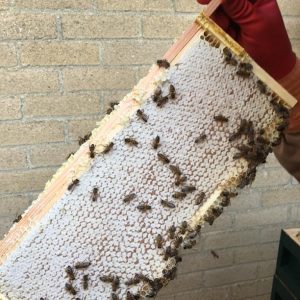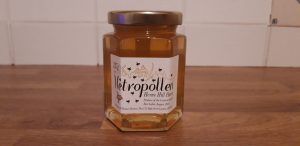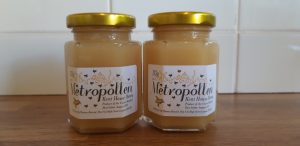
When foraging, the worker bees collect nectar, a carbohydrate made up of fructose and glucose which serves as the bees’ source of energy, and protein rich pollen, that is fed to the developing larvae. Honey is formed through the introduction of enzymes to nectar and its subsequent desiccation to below 18% moisture content. The latter process is known as hanging the honey out to dry which the bees achieve by vigorously beating their wings, fanning warm air over the stored nectar causing the evaporation of water.

With apiaries based in both suburban and rural areas, our bees forage from a wide range of species of flowering plants. In favourable years, the bees’ foraging calendar begins with hardy workers visiting crocus and willow on mild early Spring days, gorging on the glut of forage available from fruit trees and clover in late Spring, and lime and blackberry in late summer, before a frantic effort to provision the hive from the last natural sources of food prior to winter’s cold and desolate veil descending.

Typically, honey from Metropollen’s hives is harvested in early July and again at the end of August with sufficient honey left to ensure the bees are able to feed during times of dearth. The variation in the composition of plant species around each location, depending on both the time of year and the vagaries of the weather, can lead to honey of differing consistency and taste being produced. This is one of the chief attractions of honey bought from Metropollen rather than any supermarket, which is often a blend of honeys from multiple international sources, resulting in a bland, homogenised flavour. Not only can the flavour be uninspiring, but supermarket honey may not even be entirely honey as there have been suspicions that certain unscrupulous honey suppliers cut their produce with alternative, cheaper types of sugar to reduce costs.
